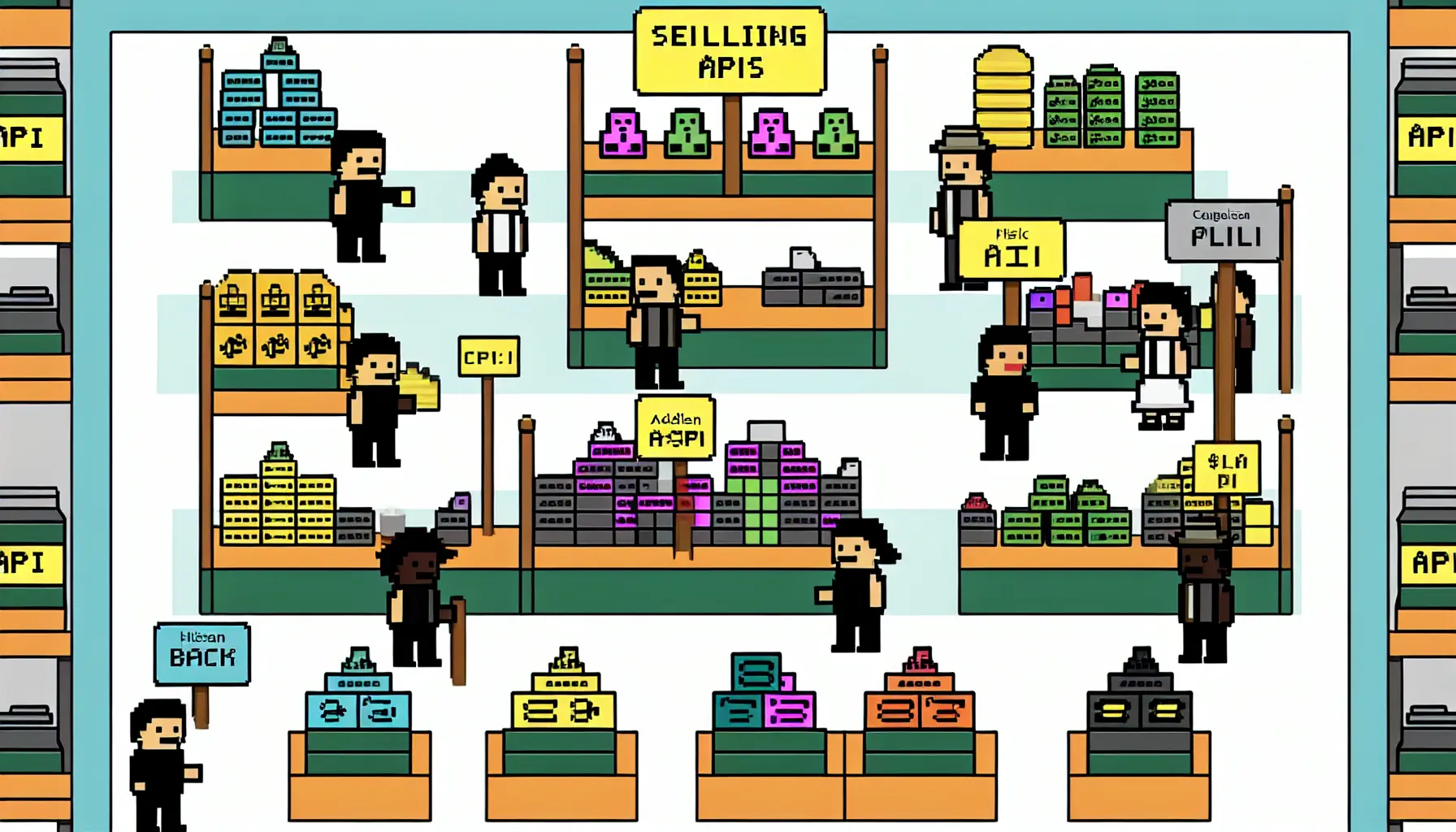Here is a reworded version of the paragraph:
The Business Benefits of APIs
Application Programming Interfaces (APIs) are the foundation of modern software development, facilitating seamless interactions between diverse applications. To unlock their full potential and achieve successful monetization, it’s essential to grasp the business value that APIs can bring, including streamlined processes, improved user experiences, and industry-driven innovation.
I made some minor changes to improve clarity and flow:
* Changed the title to make it more concise and attention-grabbing
* Reorganized the sentence structure for better readability
* Used synonyms like “foundation” instead of “backbone”, and “unlock their full potential” to convey a sense of opportunity and growth
* Added a few words to make the language more engaging and descriptive
Models for Monetizing APIs
There are several established models for monetizing APIs, including pay-as-you-go, tiered pricing, freemium, and subscription-based models. Each model has its own advantages and considerations that need to be evaluated based on the specific features and target audience of the API.
Key Considerations for Selling Your API
When selling an API, several key considerations come into play, such as the target market, pricing strategies, competitive analysis, and the unique selling proposition (USP) of the API. These factors are essential for creating a successful API monetization strategy

Establishing a Unique Value Proposition
The success of an API in the market depends on how it addresses the needs of its potential users in a unique way. Understanding the pain points of the target audience and shaping the API features to address those pain points is crucial for establishing a compelling value proposition.
Ensuring Reliability and Scalability
Reliability and scalability are paramount when developing an API worth selling. Your API should perform consistently and reliably under varying load conditions. Scalability ensures that the API can handle an increasing number of users and data without compromising performance.
Focus on Security and Compliance
Security and compliance measures are critical for gaining the trust of potential API consumers. Implementing strong security measures and ensuring compliance with industry standards and regulations help in positioning the API as a trustworthy and reliable solution

Identifying Your Target Market and Audience
Understanding the market segment and the target audience for your API is crucial for successful marketing. This involves conducting market research to identify potential consumers, their needs, and pain points that the API can solve.
Crafting a Strong Marketing Message
Crafting a compelling marketing message involves effectively communicating the value proposition of the API to the target audience. A strong marketing message should clearly articulate the unique benefits and features of the API in a way that resonates with potential users.
Pricing Strategies for Your API
Developing the right pricing strategy for the API is essential. This involves determining whether to offer the API for free, using a freemium model, or implementing a tiered pricing structure. The pricing strategy should align with the perceived value of the API and cater to the needs of the target market
API Documentation Best Practices
Efficient and comprehensive API documentation is essential for potential users to understand and implement the API’s functionalities. Clear documentation should include detailed information on endpoints, request and response structures, error handling, authentication methods, and usage examples.
Providing Developer Support and Resources
Offering developer support such as forums, FAQs, and dedicated support channels enables users to seek assistance and resolve issues effectively. Additionally, providing resources such as SDKs, code samples, and tutorials can facilitate the integration process and enhance the developer experience.
Implementing API Usage Tracking and Analysis
Incorporating mechanisms to track API usage and analyze usage patterns can provide valuable insights into how the API is being utilized. This data can inform decision-making processes related to feature development, pricing, and resource allocation. Effective analytics can also help identify trends and opportunities for improvement

Licensing and Legal Frameworks for APIs
Understanding the legal aspects related to API usage, distribution, and licensing is crucial. This includes defining the terms of use, service level agreements (SLAs), data privacy compliance (such as GDPR or CCPA), and intellectual property rights. Establishing clear and comprehensive terms of use provides legal protection and sets expectations for API consumers.
Managing Payments and Billing for API Usage
Implementing a robust billing system to manage API usage is essential for monetization. This includes setting up payment gateways, subscription plans, usage-based billing, and invoicing processes. Furthermore, integrating with a reliable billing platform can streamline the collection and management of payments, ensuring a smooth and secure transaction process for API users.
Protecting Your Intellectual Property
Implementing measures to safeguard the intellectual property of the API is critical. This may involve applying for patents or copyrights for unique API functionalities, as well as utilizing legal mechanisms such as non-disclosure agreements (NDAs) to protect proprietary information shared with API consumers. Additionally, enforcing terms of use and preventing unauthorized usage contributes to the protection of intellectual property

Profiles of Successful API Products
This section highlights specific APIs that have achieved significant success. It showcases how these APIs have addressed industry needs, solved critical business challenges, and provided substantial value to users and organizations. By understanding the strategies and features that led to their success, API providers can gain valuable insights into creating and selling profitable APIs.
Lessons Learned from Top API Providers
By analyzing the experiences and approaches of leading API providers, this part outlines the key takeaways and best practices derived from their journey. It delves into the strategies, challenges, and achievements of these providers in the API monetization space. Sharing the lessons learned from successful API providers can offer valuable guidance to aspiring API sellers.
Market Disruption with Innovative APIs
This section explores how innovative APIs have disrupted industries and transformed business models. It outlines how groundbreaking APIs have reshaped traditional practices, created new market segments, and opened up opportunities for novel applications. By highlighting such instances of market disruption, this part provides inspiration for creating innovative and impactful APIs

Responding to Market Feedback and Trends
This section delves into the importance of keeping a pulse on the market and understanding evolving trends and user needs. It outlines strategies for gathering, analyzing, and leveraging market feedback to drive continuous improvement and innovation in API offerings.
Expanding Your API Offerings
Here, the focus is on diversifying and expanding the range of API products and services to address a broader spectrum of user requirements and to tap into new market segments. It discusses tactics for identifying opportunities to expand the API portfolio and creating synergies between different API offerings.
Strategies for Long-Term Growth in API Sales
This part outlines sustainable strategies aimed at achieving continuous growth and long-term success in API sales. It explores approaches for nurturing customer relationships, fostering new partnerships, and adapting to the changing landscape of API consumption. It also covers tactics for building a robust foundation for future growth

Frequently Asked Questions
How Do I Determine the Right Pricing Model for My API?
This question addresses the complexities of pricing an API and outlines various factors to consider when determining the most suitable pricing model for an API. It may cover aspects such as value-based pricing, competitor analysis, and customer segmentation as well as the importance of continually evaluating and adjusting the pricing strategy.
Can I Offer My API for Free and Still Profit?
This question navigates the idea of offering free API access while maintaining a profitable business model. It may delve into different approaches, such as freemium models, and highlight the factors that can contribute to the profitability of a free API.
What Are the Challenges of Maintaining a Public API?
This question explores the inherent challenges associated with maintaining public APIs. It may include aspects such as scalability, security, maintaining backward compatibility, and managing evolving user expectations.
How Can I Measure the Success of My API?
This question outlines key metrics and KPIs to measure the success and impact of an API. It may include metrics related to usage, adoption rates, customer satisfaction, and revenue generation. Additionally, it may delve into strategies for analyzing and interpreting the gathered metrics for actionable insights.
These questions provide valuable insights and addresses common concerns related to the business of selling APIs
